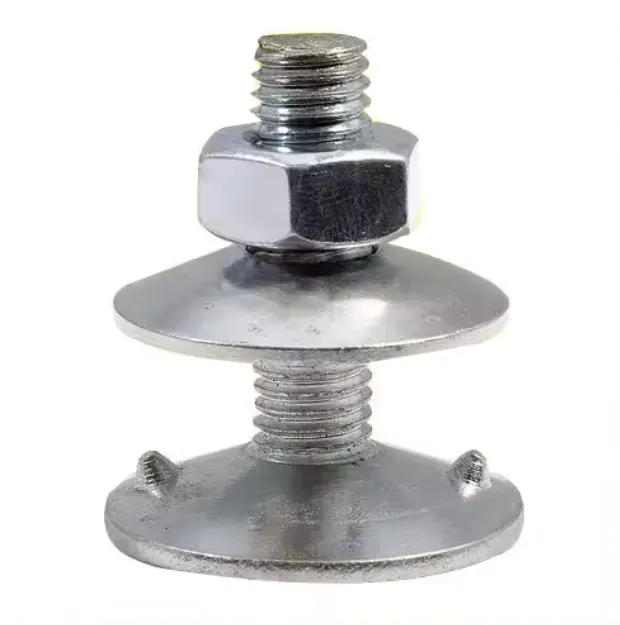

Understanding the Benefits and Applications of Locking Stud Bolts in Engineering
Nov . 04, 2024 18:16 Back to list
Understanding the Benefits and Applications of Locking Stud Bolts in Engineering
Understanding Locking Stud Bolts Features, Applications, and Benefits
Locking stud bolts are essential components in various engineering applications, offering a reliable solution for securing assemblies in hostile environments. As industries increasingly demand higher performance and durability, these fasteners have emerged as critical players in preventing loosening under vibration and dynamic loads. This article explores what locking stud bolts are, their features, applications, and benefits.
What are Locking Stud Bolts?
Locking stud bolts are specially designed fasteners that combine the functionality of traditional stud bolts with locking mechanisms to prevent them from loosening over time. Typically made from high-strength steel or alloys, these bolts feature added design elements such as serrations, grooves, or locking patterns that engage with the mating surface or nut. This design ensures a tight fit and minimizes the risk of loosening due to vibrations or thermal cycling.
Key Features
1. Thread Design Various thread designs enhance grip and locking capability. Some locking stud bolts incorporate a tapered thread, which creates a wedging effect when tightened, reinforcing the joint's security.
2. Material Composition High-quality materials are chosen based on the application's requirements. Options include carbon steel, stainless steel, and specialized alloys that resist corrosion, wear, and high temperatures.
3. Coating and Finishing Locking stud bolts often receive coatings to enhance their resistance to corrosion and wear. Common finishes include zinc plating and other protective layers that extend the bolt's lifespan.
4. Locking Mechanisms Several design options exist, from mechanical locking elements like lock nuts and washers to chemical locking compounds. The choice of mechanism depends on the specific requirements of the application.
Applications
Locking stud bolts are versatile and used across various industries, including
1. Automotive In the automotive sector, locking stud bolts secure critical components such as engines and suspensions, where vibrations can lead to fastener failure.
locking stud bolt

3. Oil and Gas These bolts are used in downhole applications, pipelines, and pressure vessels where extreme conditions can cause standard fasteners to fail.
4. Construction Locking stud bolts secure structural elements in buildings and bridges where safety and structural integrity are paramount.
5. Manufacturing Equipment In heavy machinery and equipment where vibrations are common, these fasteners ensure that critical components remain securely fastened during operation.
Benefits
Locking stud bolts offer several advantages that enhance their functionality and make them a preferred choice in many applications
1. Prevention of Loosening The primary benefit of locking stud bolts is their ability to resist loosening from vibrations and shocks, significantly reducing the risk of component failure.
2. Increased Safety By maintaining the integrity of critical connections, these bolts enhance the safety of machinery, vehicles, and structures.
3. Reliability In demanding environments, the reliability of locking stud bolts minimizes maintenance needs and extends the life of the connected components.
4. Cost-Effectiveness While locking stud bolts may have a higher initial cost than standard fasteners, their reliability reduces the likelihood of catastrophic failures and costly repairs, providing long-term savings.
5. Versatility With a wide range of designs and materials available, locking stud bolts can be tailored to meet specific requirements across various industries.
Conclusion
Locking stud bolts play a vital role in ensuring the reliability and safety of critical assemblies across a broad spectrum of industries. Their innovative design features, combined with the right material and coating choices, make them ideal for applications where conventional fasteners may fail. As engineering continues to evolve, fastening technology, including locking stud bolts, will remain crucial in meeting the challenges of modern manufacturing and construction demands.
Latest news
-
Hot Dip Galvanized Bolts-About LongZe|High Strength, Corrosion Resistance
NewsJul.30,2025
-
High-Strength Hot Dip Galvanized Bolts - Hebei Longze | Corrosion Resistance, Customization
NewsJul.30,2025
-
Hot Dip Galvanized Bolts-Hebei Longze|Corrosion Resistance&High Strength
NewsJul.30,2025
-
High-Strength Hot-Dip Galvanized Bolts-Hebei Longze|Corrosion Resistance&High Strength
NewsJul.30,2025
-
Hot Dip Galvanized Bolts-Hebei Longze|Corrosion Resistance&High Strength
NewsJul.30,2025
-
Hot Dip Galvanized Bolts - Hebei Longze | Corrosion Resistance, High Strength
NewsJul.30,2025

